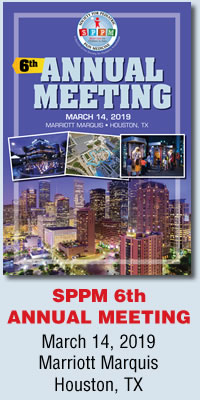Award Winning Abstracts
A High Baseline Psycho-Somatic Symptom Profile Predicts Persistent Pain at One Year following Spine Fusion in Children
Sejal K Virani, MD; Shobha Malviya, MD; Alan R. Tait, PhD; Michelle S. Caird, MD; Frances A. Farley, MD; Gertrude Ying Li, MD; Monica Weber, BSN; Terri Voepel-Lewis, PhD, RN
Department of Anesthesiology, Division of Pediatric Anesthesiology, C.S. Mott Children’s Hospital, University of Michigan, Ann Arbor, MI
Submitted by Sejal K. Virani, MD
A high symptom profile was recently described in 30% of children was associated with worse short-term pain outcomes after posterior spine fusion (PSF). Additionally, other studies have shown that there are children with persistent pain trajectories 1-5 years after posterior spinal fusion, but it is unknown if such a high symptoms profile like this or similar to chronic or centralized pain patients predicts such cases. Therefore the purpose of our study was to undergo a longitudinal study that differentiated preoperative symptom profiles in children and examined whether a high symptom profile predicts ongoing pain and analgesic use 1 year after PSF. With IRB approval, written parental consent and child assent, children aged 10-17 years were surveyed before surgery and at 1 year after PSF. Baseline self-reported measures included: pain intensity (0-10 numeric scale), location(s), and duration; neuropathic pain (painDETECT); pain catastrophizing; and PROMIS measures of fatigue, depression, anxiety, and pain interference. Perioperative and postoperative analgesic usage was recorded. Children were re-surveyed at 1 year regarding pain intensity, pain interference, neuropathic pain and analgesic use.
There were a total of 95 healthy children (75% female, 94% ASA 1-2) who completed the study. Cluster analyses ultimately delineated two groups with a high measure of cohesion and separation in the model. These clusters were differentiated in order of contribution by depression, pain catastrophizing, pain interference, fatigue, and neuropathic pain. The High Symptom Cluster had significantly higher pain intensity, pain interference, and neuropathic pain at one year (p ≤ 0.005). A multivariable linear regression model showed that this symptom cluster independently predicted pain interference at one year controlled for other characteristics (age, sex, BMI, baseline widespread pain, intrathecal morphine used, hospital morphine consumption, average hospital pain score, and number of spine levels fused). A mixed effect logistic regression model showed that, controlled for the other characteristics and hospital course, children in the High Symptom Cluster had a 50% higher probability of requiring ongoing analgesia (93% [95% CI 54.8, 99.3] vs. 43% [19.6, 69.9], p=0.001). Findings show that children with higher psycho-somatic symptoms preoperatively may be at risk for persistent pain and analgesic use 1 year after surgery. Identifying such symptomology prior to surgery may help to strategize early interventions that could mitigate persistent postoperative pain after PSF.


